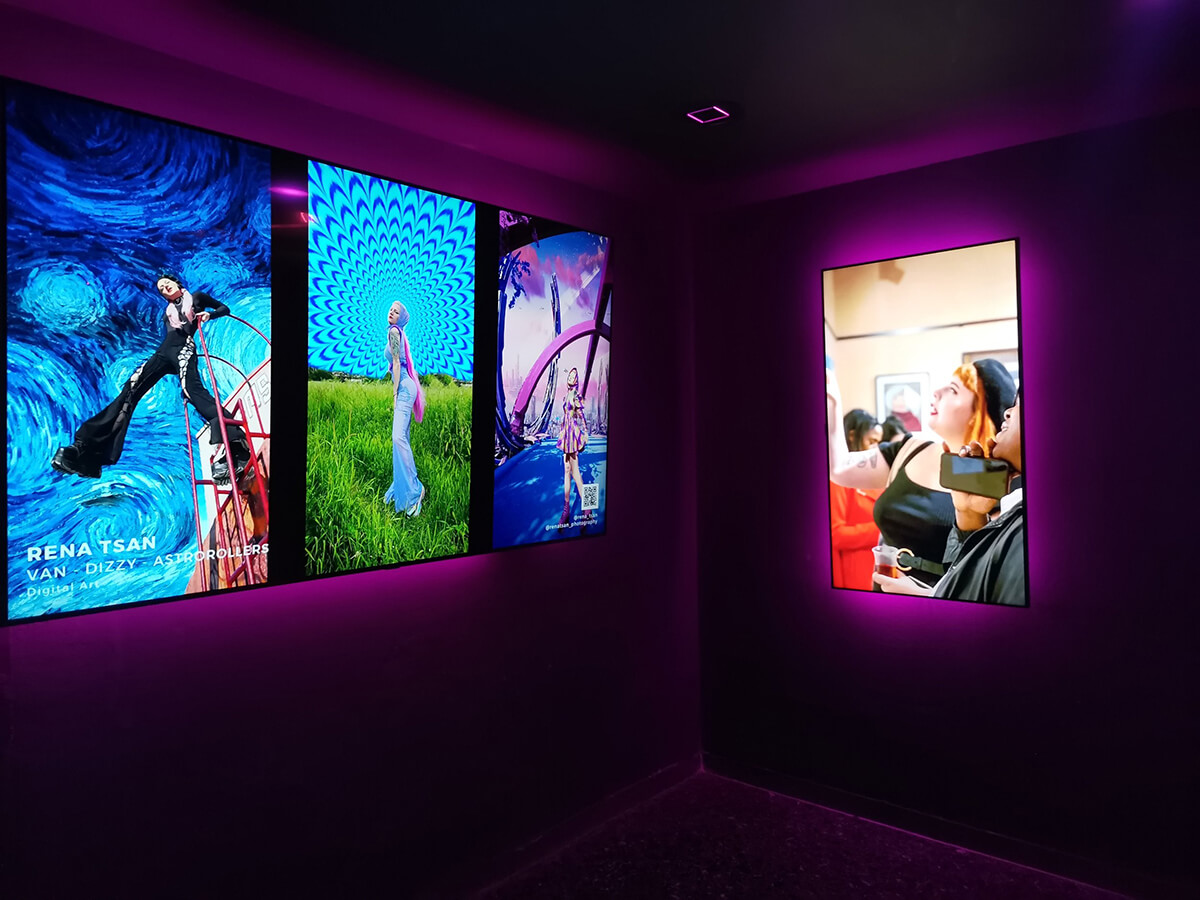In the relentless march of time, art has undergone a seismic transformation, propelled by the relentless advance of technology. In the 21st century, the very definition of "art" has expanded its borders, ushering us into the exhilarating realm of digital art.
Digital art, in its essence, represents the audacious fusion of art and technology. It harnesses the boundless potential of digital tools, software, and platforms to craft visual and auditory experiences that defy the boundaries that once constricted artistic expression. It spans from the mesmerizing intricacies of pixel art to the immersive realms of virtual reality installations, from algorithmic marvels to sprawling multimedia collaborations that transcend geographical constraints. However, what truly sets digital art ablaze is not just its medium, but the seismic impact it wields upon our contemporary understanding of art.
In the heart of
Rena Tsan: Crafting Emotions with Neon Brilliance
As the star of the "Art on Loop" exhibition, Rena Tsan left an indelible mark with her moving digital art and bold neon artistry, thus reinforcing the profound impact of digital art on contemporary expression. Tsan's creations are a captivating exploration of the human psyche, rendered in vivid neon hues that evoke visceral emotions. The exhibition unveiled her talent in two distinct but complementary forms: digital art and photography.
Tsan's digital artworks, illuminated by the neon glow, beckoned viewers to dive deep into the whirlpool of human emotions. Her pieces seemed to dance on the edge of reality, teasing the line between dream and wakefulness. The bold neon colors radiated raw energy, imbuing her work with a life force that was impossible to ignore.
One of Tsan's remarkable pieces, known as "Van," serves as a bold reinterpretation of the iconic Van Gogh style, infused with cutting-edge digital movement techniques and a vivid neon color palette. In this striking creation, Tsan skillfully blends the classic and the contemporary, seamlessly weaving together elements of Van Gogh's timeless brushwork with the dazzling allure of neon. At the heart of this piece stands a photorealistic female figure, adorned in a rebellious and avant-garde ensemble that adds a sense of edginess and modernity to the composition. "Van" embodies the artist's audacious spirit, pushing the boundaries of traditional art while paying homage to a master of the past.
In the realm of digital art, Rena Tsan has undoubtedly emerged as a luminary. Her exploration of the emotional spectrum through neon artistry challenges the way we perceive and experience contemporary art, underscoring the transformative potential of the digital medium.

"My Army" by Rena Tsan, "Ghost in the Forest" by Dmitry Ginzburg, the Holy Art Gallery
Dmitry Ginzburg: Emerging with Classical Craftsmanship
While Rena Tsan's work illuminated the exhibition with its neon brilliance, Dmitry Ginzburg's emergence as an artist brought a classical approach to digital art to the forefront, exemplifying how digital art is an expansive field with room for diverse styles and techniques. Ginzburg's works featured crafty 3D images with a watercolor feel and soft colors, drawing inspiration from both the digital world and traditional artistic techniques.
One of the highlights of Ginzburg's showcase was the piece "Dolce vita di tartaruga", a digital artwork that conjured the essence of flowing water with a mesmerizing blend of colors and textures. It encapsulated the fluidity of the digital medium, echoing the timeless beauty of watercolor paintings. Ginzburg's creations whispered a narrative of dreams and introspection, offering a refreshing counterpoint to the neon fervor of the exhibition.
In the emerging digital art scene, Dmitry Ginzburg is undoubtedly an artist to watch. His classical approach to digital art demonstrates the limitless potential of this evolving medium, proving that digital artistry is not limited to bold and flashy statements but can also evoke profound emotion and nostalgia, showcasing how digital art is capable of merging the classical with the contemporary.
A Digital Artistic Odyssey
In the luminous glow of neon and the soft hues of watercolor, Greece's "Art on Loop" proved that the future of art is not static but a continuous, dazzling loop of inspiration and innovation, compelling us to acknowledge that digital art stands as a monumental force that has irrevocably reshaped our understanding of art. It has obliterated the boundaries of artistic expression, transcended the limitations of physical space, and democratized a once-elite realm. As we navigate this digital revolution, it is incumbent upon us to both embrace its transformative power and confront the challenges it thrusts upon us. The fusion of art and technology is an unfolding odyssey, promising uncharted opportunities and pushing the very boundaries of human creativity. As critics and connoisseurs, it is our solemn duty to venture boldly into this new world of digital art, for it stands as an indomitable and irrefutable part of our cultural fabric in this thrilling age.
